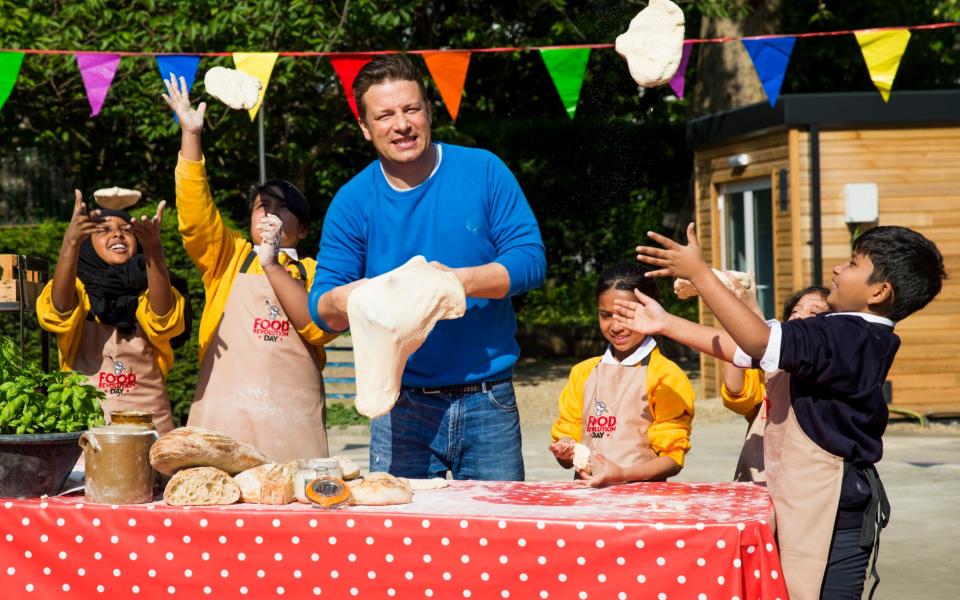Jamie Oliver: School cake and bake sales send the wrong message

He campaigned to ban Turkey Twizzlers and chips from school dinner menus, and now Jamie Oliver has trained his sights on cake and bake sales.
No school fundraiser is complete without a stall selling cupcakes, made by parents or the children themselves.
But the Jamie Oliver Food Foundation says including such treats sends out the wrong message about healthy eating.
“The culture of high fat and sugary foods used as rewards, in fundraising and in celebrations, is creating social and physical environments that contradict children’s food education,” the foundation said in a report.
It cited research which found that 86 per cent of secondary school teachers and 85 per cent of primary school teachers said their school fundraising activities include cake and bake sales.
Children are aware of the mixed messages about good nutrition, the foundation said. “This appears to be recognised by pupils and school staff, and there is an appetite from parents for the use of such foods in this way to be limited to once a term.”

The report, produced in partnership with Sheffield University, also found that schoolchildren are being rewarded with treats high in salt, sugar and fat.
In one case, a secondary school offered doughnuts to forms with 100 per cent attendance records over a month. In another, pupils were offered pizza and fried chicken from Domino’s and KFC as encouragement to take part in weekend revision sessions.
Unhealthy foods are still on sale in many secondary schools.
The foundation warned that youngsters are choosing them because they are cheaper than healthier alternatives, and readily available.
The culture of high fat and sugary foods used as rewards, in fundraising and in celebrations, is creating...environments that contradict children’s food education.
The Jamie Oliver Food Foundation
In some cases, marketing tricks that are used on the high street were found in school cafes and canteens, with sweet treats put near tills and cutlery points.
"Salad, on the other hand, was often harder to reach and positioned in places inconvenient to stop, nestled between other items set back on the main serving areas or in a separate place away from the main queue."
The foundation is calling for all schools to become "healthy zones" where pupils' health and wellbeing are promoted throughout all parts of school life.
Figures published on Thursday showed that childhood obesity is on the rise, with almost one in 10 four and five-year-olds hitting dangerously fat levels.
New school food standards designed to ensure that pupils eat healthily were introduced in 2015, but the study says it is questionable whether these are being introduced and monitored.

In a foreword to the report, Jamie Oliver said: "We've found that there's a massive difference between the schools that are doing a great job at delivering food education and those that are struggling.
"We are alarmed at the concerns raised about the food available, particularly in secondary schools.
"But at the same time, we are really motivated by the teachers, pupils and parents asking for a healthier school environment."
Oliver’s latest book, 5 Ingredients - Quick and Easy Food, includes a section entitled Sweet Treats.
Recipes include a cherry chocolate mousse made with double cream and 2 tablespoons of golden caster sugar, and a frozen banoffee cheesecake using a packet of Hobnobs and half a jar of dulce de leche.
